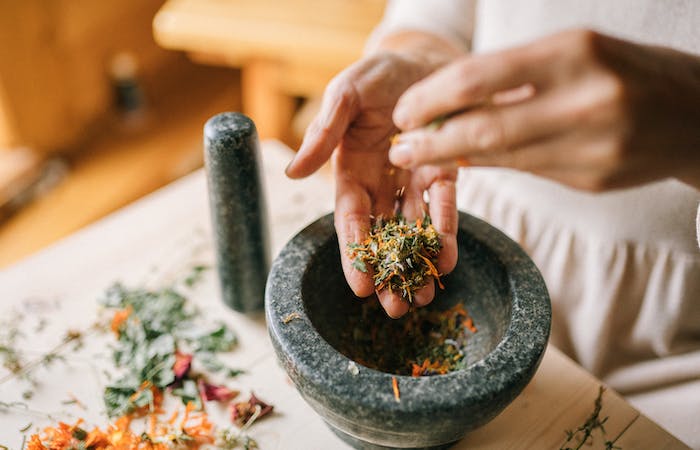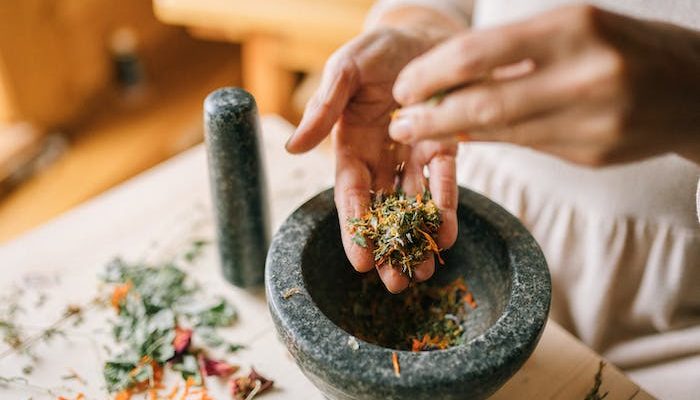
Australia, renowned for its breathtaking landscapes and distinctive wildlife, boasts a profound heritage of indigenous wisdom connected to herbs and spices. The diverse ecosystems of this vast continent have given rise to an array of aromatic plants that add flavour to dishes and offer numerous health benefits. So, this blog will explore the Indigenous Australian herbs and spices, highlighting their remarkable contributions to health and well-being.
Bush Tucker: A Culinary Treasure
For Indigenous Australians, traditional foods known as “Bush Tucker” have been a crucial part of their diet and culture for generations. These foods include an abundance of herbs and spices that provide a distinctive taste and boast various medicinal properties.
Lemon Myrtle: A Citrusy Delight
Lemon myrtle (Backhousia citriodora) is a native Australian herb celebrated for its intense lemony aroma and flavour. It is rich in antioxidants, making it a valuable addition to the diet to combat free radicals and reduce oxidative stress. Additionally, lemon myrtle is believed to have antimicrobial and anti-inflammatory properties, potentially aiding in treating respiratory conditions and skin issues.
Wattleseed: A Nutrient-Packed Superfood
Wattleseed, sourced from various Acacia species, has been a staple in Indigenous Australian diets for centuries. This protein-rich seed contains essential amino acids, making it a valuable source of plant-based protein. Additionally, it boasts a significant dietary fibre content, supporting digestive well-being and aiding in the maintenance of blood sugar levels. With a subtle nutty flavour, wattleseed is often used in baking and cooking to enhance both taste and nutrition.
Pepperberry: Nature’s Anti-Inflammatory
Pepperberry (Tasmannia lanceolata) is a spice with a fiery kick. It contains a compound called polygodial, which exhibits potent anti-inflammatory properties. Indigenous Australians have used it for centuries to alleviate various ailments, from digestive issues to arthritis.
Bush Tomato: A Unique Culinary Gem
The bush tomato (Solanum centrale) is a small fruit with a distinctive tart flavour. Historically, Indigenous communities have relied on it as a natural source of vitamin C, a crucial component for maintaining a strong and resilient immune system. Its robust array of antioxidants further contributes to shielding cells against harm and reduces the likelihood of chronic illnesses.
Kakadu Plum: An Antioxidant Powerhouse
Kakadu plum (Terminalia ferdinandiana) is celebrated for its exceptional vitamin C content, ranking among the highest of any fruit globally. Indigenous Australians have used it for its antibacterial and antifungal properties and its potential to boost collagen production, aiding in skin health.
Embracing Indigenous Wisdom
While the health benefits of Indigenous Australian herbs and spices are increasingly recognised, it is essential to acknowledge the significance of preserving indigenous knowledge and respecting cultural practices. In the meantime, the spice market in the country is expected to grow annually by 5.04% at a CAGR by 2028.
Incorporating Indigenous Herbs and Spices into Your Diet
If you’re eager to explore the flavours and health benefits of Indigenous Australian herbs, there are various ways to incorporate them into your diet:
- Experiment with lemon myrtle as a seasoning for fish or chicken.
- Add roasted wattleseed to your baked goods or morning oatmeal.
- Spice up your dishes with a pinch of pepperberry for a unique twist.
- Enhance the taste of your sauces and stews with bush tomato.
- Incorporate Kakadu plum into smoothies or desserts for a vitamin C boost.
Conclusion
Indigenous Australian herbs and spices tantalise the taste buds and offer abundant health benefits. These unique ingredients, deeply rooted in the cultural heritage of Australia’s First Nations, provide a window into the rich tradition of Bush Tucker. By embracing these herbs and spices, you enhance your culinary experiences and contribute to preserving indigenous knowledge and the sustainable use of Australia’s natural resources. So, it’s time to savour the flavours and wisdom of Down Under.

